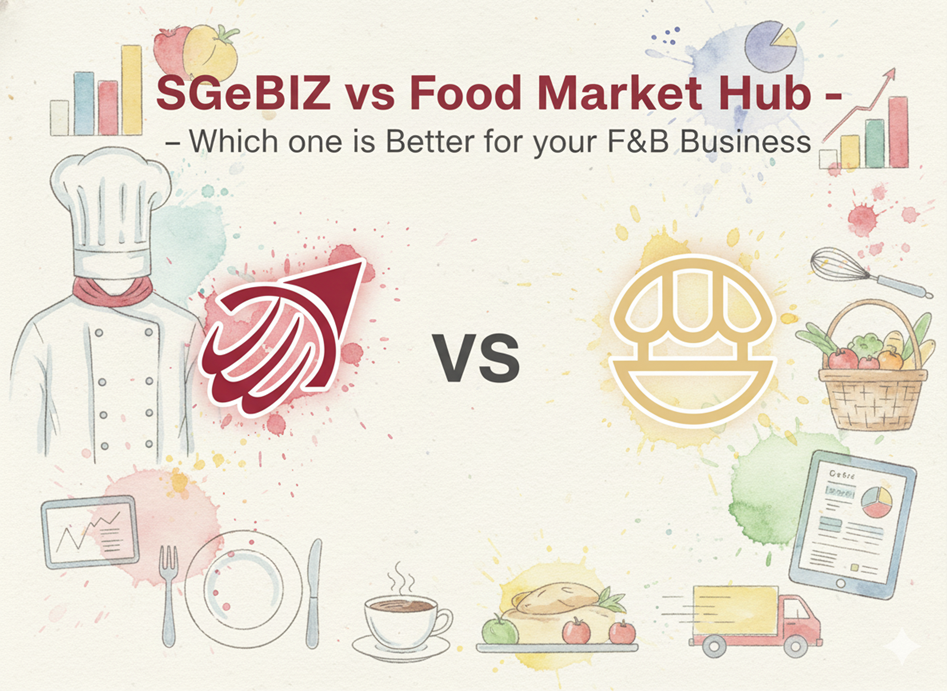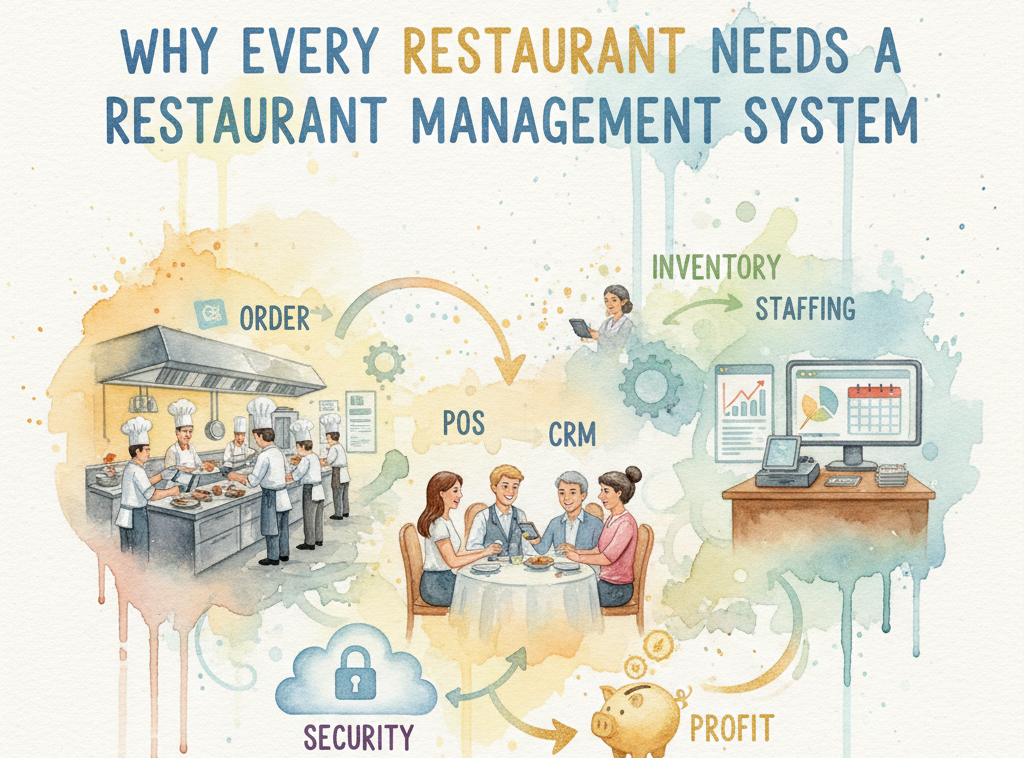Central Kitchen: Benefits of Owning One For Your Restaurant

A central kitchen is a common kitchen space owned by restaurants that have multiple branches or locations. It is used to prepare parts of a meal or even complete meals which are then packaged and distributed to the restaurant’s various locations.
A central kitchen is usually set up to save on costs such as staff and food cost.

Image Source: Unsplash
Hospitality Review states that almost 10 percent can be saved when you mass purchase for a central kitchen instead of buying supplies for each restaurant separately.
In this post, we talk about what a central kitchen is, how it operates, and what are the benefits of having a central kitchen for your restaurant.
What is a Central Kitchen?
A central kitchen is a common facility for a group of restaurants or eateries that belong to the same name. The role of a central kitchen is to cut down on staff and other food costs by purchasing all the raw materials and prepping meals for the other branches of the restaurant.
A central kitchen is also rented out sometimes to smaller restaurants, food trucks, and other cafes to use if they do not have an equipped kitchen of their own to store huge quantities of ingredients or raw materials and prepare meals or cook entire meals to be sold at the restaurant.
Central kitchens are becoming popular with more and more restaurants who prefer to make their own components such as breads and sauces in-house. With a central kitchen, restaurants get to produce all their components or even full meals in one place and distribute them across all their outlets/ locations.
Central kitchens also allow for storage of huge amounts of frozen food and can house expensive equipment for cooking or processing certain components of the food. This food can then be transported to all locations of the restaurant where they can be further cooked and sold.
The Benefits of Having a Central Kitchen
There are many benefits of having a central kitchen for your restaurant business. In this section we are going to discuss all the advantages.
- Growing Your Business
With a central kitchen, you have opportunities to grow your business into areas you may have never thought of before. For instance, if a certain part of your meals (like your in-house baked bread, or your sauces) are very popular, you could consider making them and selling them to local markets or to other restaurants.

Image Source: Unsplash
This gives you another revenue stream that does not require additional facilities or staff to run. It can also help you test out markets and allow you to expand your business into new areas like retail and wholesale marketing.
- Consistency in Taste and Quality
Having a central kitchen allows you to be consistent in your final product. Using the same equipment, the exact same recipes, and the same staff member gives your meals a sort of consistency and unique taste that is spread throughout all your other branches.
It also allows you to hold a certain standard for your food and maintain quality. Any changes you need to make to your recipes or ingredients can be made immediately without having to implement them in all of your restaurants.
Food and beverage chains that have a central kitchen are able to have uniform standards and quality throughout their outlets, which is admired by customers.
- Brand Name and Signature Style
On that same note, having consistent quality and taste can give rise to your unique brand that can be recognized by people all over. This means that your customers identify you with your signature cooking style or the ingredients that you make in-house.

Image Source: Unsplash
This can be great for brand development and can give your brand authenticity and popularity among customers.
- Helps Increase Efficiency
A central kitchen greatly improves your efficiency by automating your processes, streamlining your procedures, and batching tasks.
The two main ways in which you can increase your efficiency with a central kitchen are:
Inventory - a bigger facility will result in bigger purchases, that will ultimately cut down your costs due to wholesale purchasing and lesser deliveries.
You can also easily track your purchase since they are all in one place, and that allows you to control wastage and buy only the items you really need and use.
Human Resources - Automation of many of your processes allows you to save manpower that you can use for other tasks.
Since many components (or even whole meals) are created in the central kitchen, the staff of your individual restaurants can now focus on other tasks such as customer service.
Using a central kitchen to do your main, time-consuming cooking and storage tasks can free up a lot of manpower at your restaurants and also help you improve your overall marketing and services.

Image Source: Unsplash
Improving your restaurants’ efficiencies will automatically lead to better customer service and higher profits.
Apart from these two key points, building a central kitchen also allows you to better distribute your human resources, optimize the design and structure of your central kitchen facility to increase productivity, buy large equipment (that works out cheaper than investing in many different smaller sized equipment for different facilities), lower maintenance costs, lower purchasing and warehousing costs, easier communication between the team, less need for transportation, better waste management system, centralized computer systems, and lower miscellaneous expenses.
- Potential Income Source
When you spend high costs setting up a good central kitchen, with all the expensive, heavy-duty freezers, cooking equipment, gas stoves, ovens, refrigerators, frying equipment, and other such things, it can be a good idea to rent it out to smaller restaurants, food trucks, and cafes, that may not be ready to set up their own high-end kitchens yet.
Your central kitchen then becomes a good source of secondary income, and could earn you a lot each day. This could just be a side income, but it can help you break even when you first set up your restaurants and central kitchen.
- Reductions in Unit Cost
In the food and beverage industry, it is really easy to cut down on per unit cost by buying things in bulk and streamlining certain tasks. A central kitchen allows you to do that.
Although the initial investment may be a little high, it will be well worth it in the long run. You will find that buying all your ingredients and even your equipment in bulk will save you a lot of money. Also, there will be less wastage and spoilage since you will be able to account for all your inventory in a better and more efficient way.

Image Source: Unsplash
The larger the size of your business, the more cost advantage you have with a central kitchen. It will significantly reduce your unit cost as your facility size and equipment usage increases. This is commonly referred to as economies of scale.
- Better Operation of The Kitchen
Most of the cooking and other major tasks get done in the central kitchen. This changes the way the various outlet kitchens operate. For instance, the outlet kitchens now require less kitchen space to work. They also require a lesser number of staff members to function.
Only some basic cooking equipment is needed at each separate outlet kitchen. This is because most of the heavy lifting is done in the central kitchen, and most often the only thing left to be done in the outlet kitchen is the combining of the main ingredients and serving.
The outlet kitchens also require less storage space and freezer size for storage of frozen foods and raw materials. Thus the central kitchen dramatically changes the everyday operation and functioning of the individual restaurant outlet kitchens.
- Standard Recipes and Operating Procedures
Like we spoke about before, most of the major cooking tasks is done in the central kitchen which leaves only menial tasks to be completed in the outlet kitchen. Although the main recipes need to be followed carefully in the central kitchen, the outlet kitchen staff need to only worry about following the standard operating procedures of putting together each meal, serving it well and sending it out to the customers.

Image Source: Unsplash
The outlet staff, therefore, need not be very experienced cooks or chefs in order to put together consistent, high quality meals for the customers of the restaurant.
- Ordering Procedure for Supplies
A central kitchen also affects the ordering procedure of the restaurant outlet when it comes to keeping stocks of ingredients in the individual restaurant’s inventory.
The PAR stock system is used to keep track of the stock in the inventory and order in new stocks. The PAR system stands for Periodic Automatic Replenishment system and is used in most central kitchens.
These are all the benefits of having a central kitchen to manage your restaurant outlets. Having a central kitchen can truly affect your food and beverage business in significant ways. It also has a tremendous influence on the way your restaurant outlet kitchens work on a day to day basis.










